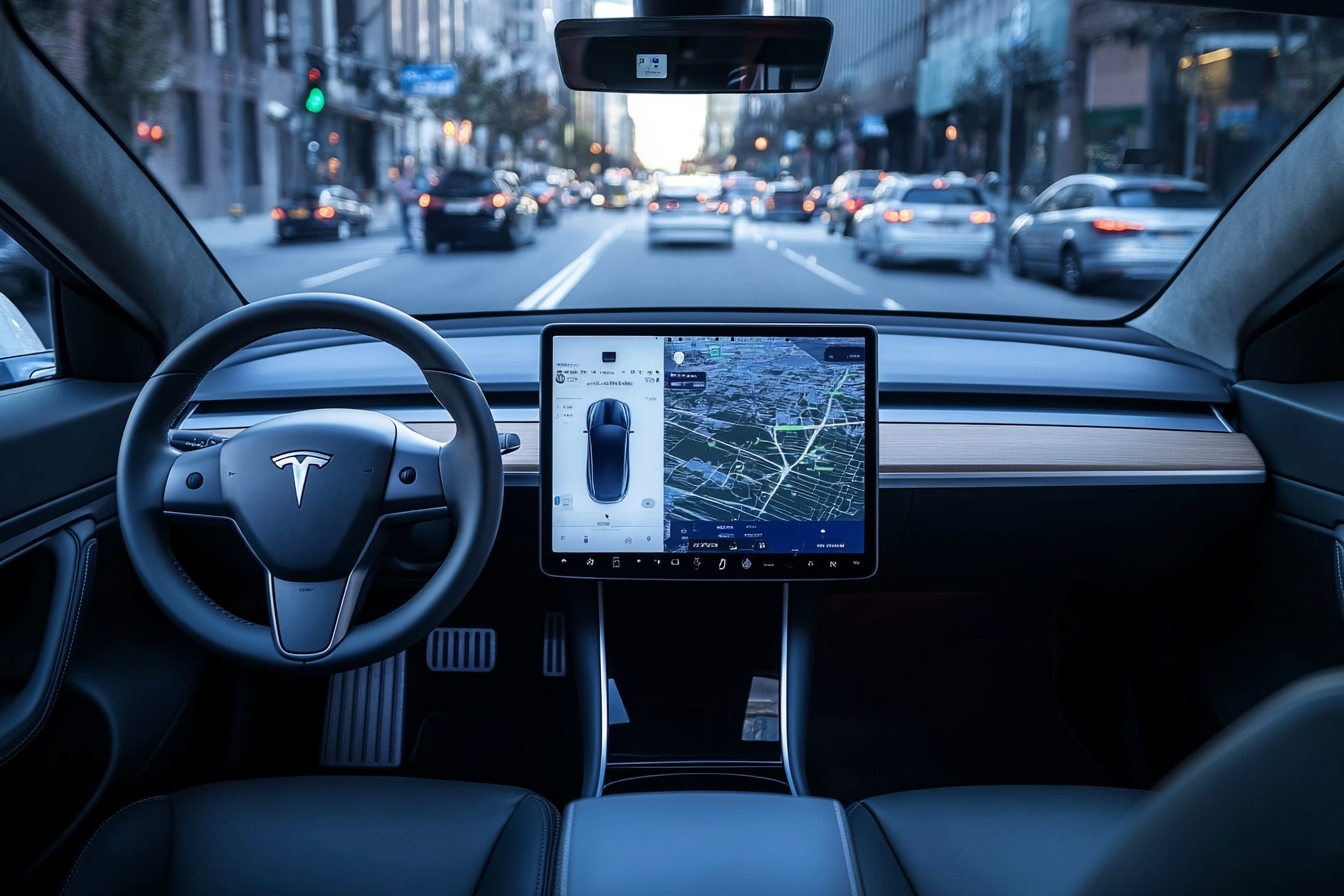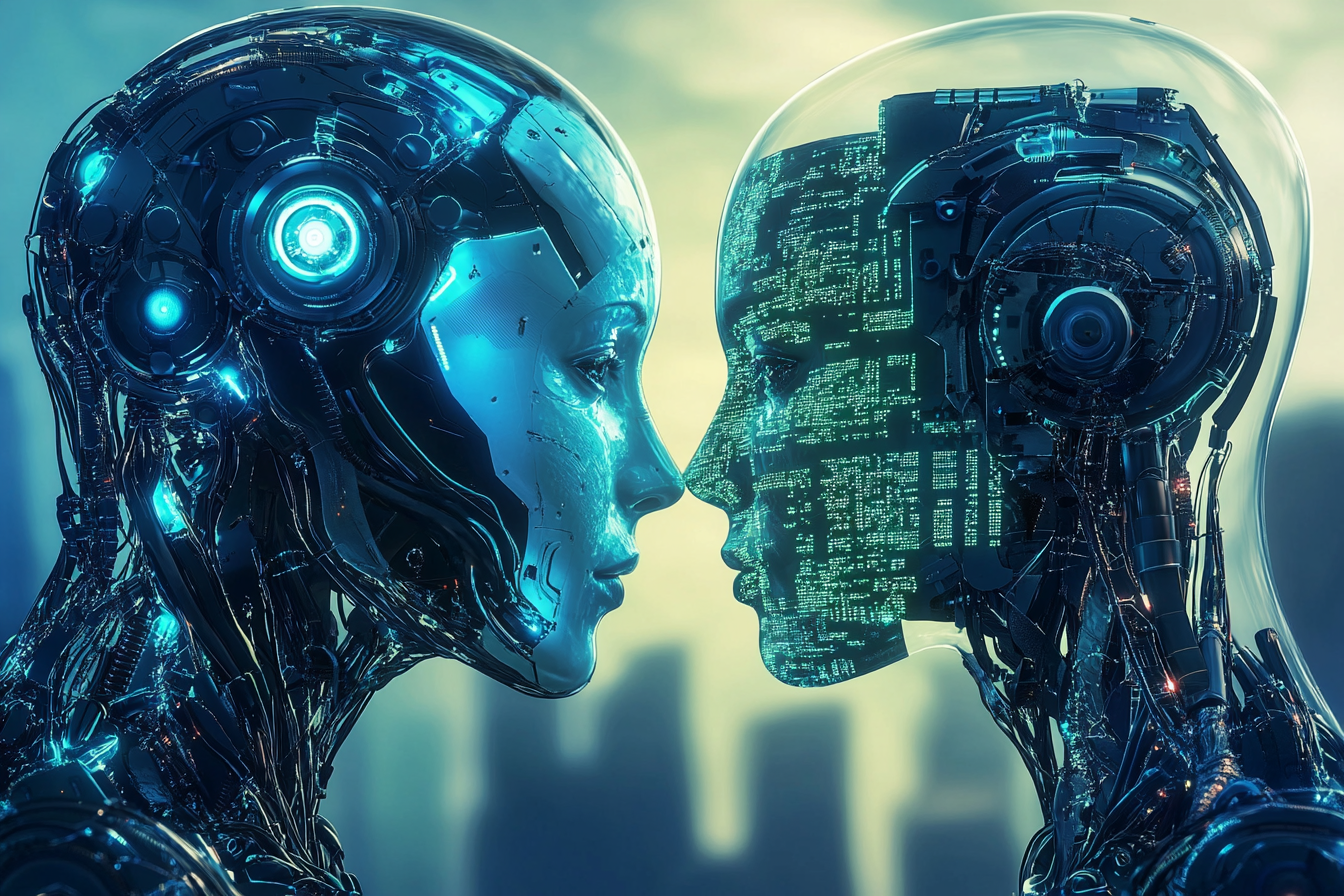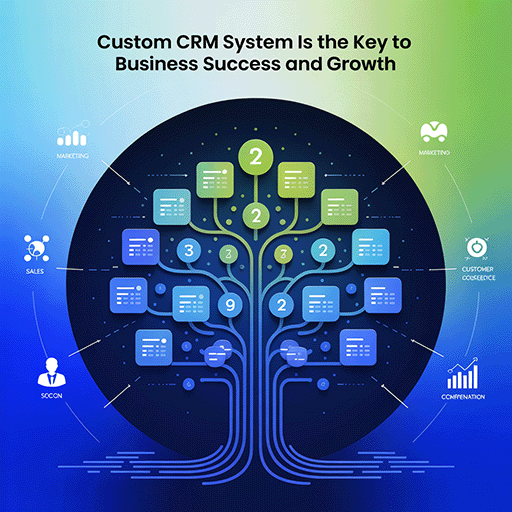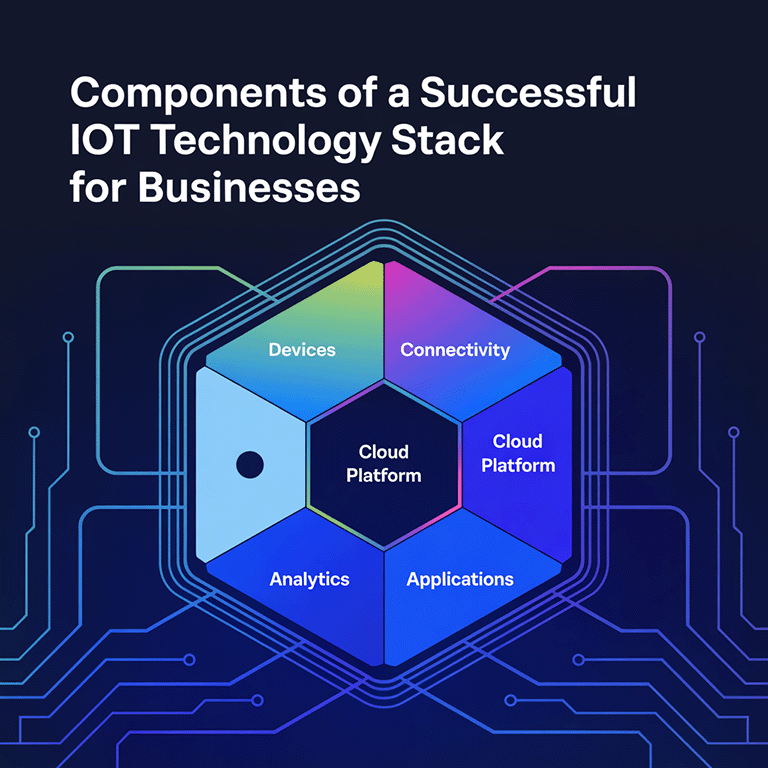What happens when AI makes all the decisions without humans?
A. Faster work
B. More errors
C. No jobs for people
D. All of the above
If you chose D, you’re right! AI is smart, but it still makes mistakes. That’s why augmented collective intelligence is growing fast. It helps people make better choices instead of replacing them.
Businesses know this. Investments in artificial intelligence grew by 29% in one year, showing how fast AI is evolving. But companies don’t want AI to take over; they want it to help. That’s where augmented human intelligence comes in.
Think of it as a smart tool, like a GPS for decision-making. It gives suggestions, but the driver (a human) still decides where to go. This is the future—not just AI replacing people, but AI and humans working together.
What is Augmented Intelligence?
Augmented intelligence is AI designed to boost human thinking instead of replacing it. It helps people make better choices with real-time data insights. AI-augmented systems provide support by analyzing vast amounts of information and enhancing decision-making processes.
This approach aligns with the augmented intelligence definition, where AI works alongside humans rather than autonomously.
Businesses utilizing AI augmented intelligence can improve efficiency, accuracy, and innovation. Understanding how to define augmented intelligence is key to maximizing its benefits in various industries.
In 2024, over 1.03 billion people used mobile augmented reality (AR). By 2028, this number will grow to 1.19 billion. This proves that AI-powered tools are becoming a part of daily life—not as replacements, but as enhancements.
Here’s how augmented intelligence solutions work in real life:
- Healthcare – AI helps doctors detect diseases, but they always confirm the diagnosis.
- Finance – AI scans for fraud, but human analysts make the final decision.
- Customer Service – AI chatbots handle simple queries, but humans step in for complex issues.
Augmented intelligence is opening new possibilities for business innovation, much like artificial intelligence. Exploring the best AI business ideas shows how companies are leveraging both technologies to create smarter solutions.
Augmented Intelligence vs. Other AI Approaches
Many assume all AI works the same way. But the augmented intelligence framework is different.
| Feature | Augmented Intelligence | Predictive AI | Automation AI |
| Goal | Assists human decision-making | Predicts future trends | Replaces manual tasks |
| Human Involvement | Always required | Sometimes required | Rarely required |
| Best Use | Healthcare, finance, customer service | Marketing, sales forecasting | Manufacturing, logistics |
Unlike automation, augmented intelligence is another term for “AI that supports human expertise.” It focuses on human-AI collaboration rather than replacing jobs.
Where is Augmented Intelligence Used?
Many businesses rely on augmented intelligence examples. Some key augmented intelligence use cases include:
- Medical Research – AI analyzes health records, but human doctors use the insights.
- Fraud Detection – AI flags unusual transactions, but fraud analysts decide the next steps.
- Retail & E-commerce – AI suggests products based on buying habits, but humans manage stock.
- Legal & Compliance – AI reviews contracts, but lawyers verify them.
- Supply Chain Management – AI predicts demand, but logistics teams make decisions.
These are just a few examples of augmented intelligence in action.
How Does Augmented Intelligence Work?
The goals of augmented intelligence are simple: to improve speed, reduce errors, and support better decision-making. Here’s how it works:
- Data Collection – AI gathers large volumes of information.
- Pattern Recognition – AI identifies trends, risks, and insights.
- Decision Support – AI provides suggestions, but humans always decide.
Think of augmented knowledge as a smart assistant, not a replacement.
Example: IBM Watson in Healthcare
IBM Watson is one of the most well-known augmented intelligence solutions. It scans medical reports to identify early disease markers. However, it does not make medical decisions—doctors do.
How the Food Industry Uses Augmented Intelligence
Even restaurants use an augmented intelligence framework to improve operations. Yum Brands, the parent company of Taco Bell, KFC, and Pizza Hut, is working with Nvidia to bring AI into restaurants.
Here’s how:
- Voice AI – AI takes drive-thru orders.
- Computer Vision – AI helps speed up food preparation.
- Inventory Tracking – AI monitors ingredient levels.
Yet, humans stay in control. AI just makes their jobs faster and more efficient.
Why Augmented Intelligence is the Future
The difference between augmented intelligence and artificial intelligence is clear. Augmented intelligence is about helping people, not replacing them.
What makes augmented intelligence meaning so important?
- Humans stay in control – AI provides advice, but people make decisions.
- Fewer mistakes – AI spots patterns humans might miss.
- Faster decision-making – AI speeds up research and analysis.
- Lower risk – AI does not fully replace human judgment.
This is why augmented AI meaning is gaining attention in business and healthcare. It allows AI to enhance human thinking instead of taking over jobs.
Augmented Intelligence in Business
Want to see how augmented intelligence works in real-world business? Here are some cases:
- Amazon – AI suggests products, but humans decide prices.
- Netflix – AI recommends movies, but people create the content.
- Tesla – AI helps drive cars, but humans take control in emergencies.
Augmented collective intelligence means that AI works best when it collaborates with people.
What is Artificial Intelligence?
Artificial intelligence refers to machines performing tasks that usually require human intelligence. These tasks range from solving problems to recognizing patterns, making predictions, and even understanding language. AI systems can function without human intervention, making them powerful tools for industries like healthcare, finance, and manufacturing.
AI is not just a concept; it is being actively used across industries. In 2023, 35% of retailers adopted AI, computer vision, and machine vision on a large scale, proving its growing role in automation and data-driven decision-making.

AI is divided into different categories based on its capabilities:
- Narrow AI: This type of AI is designed for specific tasks. It does not have general reasoning abilities but can outperform humans in its assigned job. Examples include voice assistants like Siri or Alexa, spam filters in emails, and AI-powered recommendation engines.
- General AI: This is a hypothetical form of AI that would be able to perform any intellectual task a human can do. It would have reasoning, problem-solving, and learning abilities similar to the human brain. Scientists are still working towards this level of AI, but it does not yet exist.
- Super AI: This is a theoretical concept where AI would surpass human intelligence. It would have decision-making abilities beyond human understanding. While this remains in the realm of science fiction, discussions about its ethical implications are already taking place.
AI plays a key role in automation, robotics, and predictive analytics. Many industries use AI to streamline operations, reduce human error, and process large amounts of data faster than any human can.
Augmented intelligence enhances human decision-making, while artificial intelligence focuses on automation. Businesses exploring AI-driven solutions can check out AI development services to find the right fit for their needs.
How Does Artificial Intelligence Work?
To understand how artificial intelligence works, it is important to look at the core processes behind it. AI is built on several advanced technologies that allow it to analyze data, recognize patterns, and make decisions.
Machine Learning (ML) is one of the most widely used AI techniques. AI models are trained on large amounts of data, learning from past experiences to make better predictions over time. ML is the foundation of AI applications like fraud detection, recommendation systems, and speech recognition.
Deep Learning is a more advanced form of ML. It uses neural networks that mimic the human brain, allowing AI to recognize complex patterns in data. Deep learning is behind facial recognition, autonomous vehicles, and AI-driven medical diagnoses.
Natural Language Processing (NLP) allows AI to understand and generate human language. This is how chatbots, voice assistants, and language translation tools work. NLP is also used in customer service automation, making interactions smoother and faster.
Computer Vision enables machines to “see” and analyze images or videos. This is used in self-driving cars, medical imaging, and even security surveillance. AI-powered cameras can detect faces, recognize objects, and analyze real-world environments.

The power of AI is seen in real-world applications.
AI Case Study 1: Tesla’s Self-Driving Cars
Tesla uses a combination of computer vision, deep learning, and machine learning to power its self-driving technology. The car’s cameras and sensors gather data in real-time, and AI processes this information to detect objects, recognize road signs, and make driving decisions.
Tesla continuously updates its AI model, allowing cars to improve their driving abilities through software updates.
AI Case Study 2: JPMorgan Chase’s Fraud Detection
Banks use AI to prevent fraud. JPMorgan Chase developed an AI-powered system called Omni that monitors transactions in real-time. The AI flags unusual activity, such as large transactions from a new location, and alerts security teams. This has reduced fraud-related losses and improved security for customers.
The economic impact of AI is massive. Generative AI could add between $2.6 trillion and $4.4 trillion annually to the global economy. This highlights AI’s ability to boost productivity across multiple industries, from finance to creative fields like content generation.
AI is not just about automation—it is also playing a crucial role in sustainability efforts. Many companies are adopting AI in sustainable business practices to improve efficiency while reducing environmental impact.
AI in Different Fields
AI’s impact is widespread. The artificial intelligence framework is applied in many industries.
| Industry | Artificial Intelligence Solutions |
| Healthcare | AI diagnoses diseases using medical imaging |
| Finance | AI detects fraud and predicts stock trends |
| Retail | AI personalizes recommendations for shoppers |
| Transportation | AI enables self-driving technology |
| Manufacturing | AI-powered robots improve production efficiency |
AI is also transforming the way businesses interact with customers. The difference between augmented intelligence and artificial intelligence is that while AI can operate independently, augmented intelligence works alongside humans.
One question remains: how far can AI go? The rapid advancements in AI mean that industries must prepare for even more integration. While AI can automate tasks, businesses must ensure that it enhances human capabilities rather than replacing them entirely.
AI is here to stay, shaping industries, automating processes, and improving efficiency. However, human oversight remains crucial in ensuring that AI is used responsibly.
AI continues to reshape industries from healthcare to finance and beyond. The growing impact of how artificial intelligence is changing the world highlights why businesses are investing in AI-powered tools.

Augmented Intelligence vs. Artificial Intelligence: Key Differences
Technology is changing the way people work and make decisions. AI is no longer just about automation—it is also helping humans think better and make smarter choices. This is where the difference between augmented intelligence and artificial intelligence becomes clear.
The world is already shifting towards AI-powered services. In 2023, 28% of consumers felt very comfortable using AI to check order statuses in e-commerce, showing how people are getting used to AI systems in daily life.
However, there is still hesitation when AI makes decisions without human input. This is why augmented vs artificial intelligence is an important debate. While one focuses on replacing human effort, the other aims to enhance it.
Purpose
The purpose of AI and augmented intelligence is different. One works to take over tasks, while the other works to support human thinking.
Augmented Intelligence
Augmented intelligence is about assisting humans in making decisions. It processes large amounts of data, recognizes patterns, and provides insights. But the final decision is always made by a human. Businesses use augmented intelligence to improve accuracy, reduce errors, and speed up decision-making.
For example, in healthcare, AI scans medical records to detect disease risks, but a doctor confirms the diagnosis. This approach improves efficiency but keeps human control intact.
Artificial Intelligence
Artificial intelligence focuses on automation. It is designed to perform tasks on its own, without human help. AI is used in self-driving cars, chatbots, and robotics. It follows algorithms and pre-set rules to complete tasks quickly and accurately.
Companies like General Motors have improved their OnStar service using Google Cloud’s conversational AI, making virtual assistants recognize driver requests better. This reduces human workload, making AI a key tool in customer service automation.
Human Involvement
The biggest difference between AI vs IA is the level of human control.
Augmented Intelligence
Human oversight is at the center of augmented intelligence vs ai. AI provides recommendations, predictions, and insights, but a person always reviews and approves the final action.
In the banking sector, AI scans transactions for fraud risks, but human analysts verify flagged cases before taking action. This reduces false alarms while ensuring accuracy and trust.
Artificial Intelligence
AI often operates on its own. It can process huge amounts of data and make real-time decisions without waiting for human input. In e-commerce, AI-powered chatbots answer customer queries without human involvement.
While this saves time, it sometimes leads to incorrect responses, which frustrates users. That is why many companies still use hybrid models, where AI handles basic tasks and humans manage complex issues.
The debate between artificial intelligence and machine learning often overlaps with discussions on augmented intelligence. Understanding the key differences in AI vs. machine learning helps in choosing the right approach for business applications.

Decision-Making
How is augmented intelligence different from AI when it comes to making decisions? The difference is clear:
Augmented Intelligence
This approach is designed for decision support. AI provides information, but a human decides what action to take. In cybersecurity, AI flags potential threats, but security experts analyze and confirm the risks before acting.
This method ensures that the AI does not make critical mistakes that could lead to false alarms or system shutdowns.
Artificial Intelligence
AI is used in decision automation. It follows set rules and algorithms to act without human approval. AI in stock trading automatically buys or sells shares based on market conditions.
While this makes trading faster, it also introduces risks because AI cannot always predict unexpected market shifts the way humans can.
Flexibility
AI and augmented intelligence differ in how adaptable they are to new situations.
Augmented Intelligence
This system works best when human judgment is needed. AI helps analyze large data sets, but people can adjust strategies based on new insights. In the legal industry, AI scans contracts for errors, but lawyers decide whether to accept or modify them.
This ensures that legal documents stay accurate without missing context-specific details.
Artificial Intelligence
AI is less flexible in situations it has not been trained for. It works well in structured environments but struggles with unexpected changes.
AI in logistics can optimize delivery routes, but when roads are closed or weather conditions change, human intervention is often needed to adjust the strategy.
Applications
Both augmented intelligence solutions and AI are used in various industries, but their applications differ.
Augmented Intelligence
- Healthcare: AI suggests treatments, but doctors make the final medical decisions.
- Finance: AI detects fraud, but human analysts review and confirm cases.
- Retail: AI recommends products, but human marketers set pricing strategies.
Artificial Intelligence
- Manufacturing: AI robots assemble products without human input.
- Self-Driving Cars: AI navigates roads and avoids obstacles.
- Customer Service: AI chatbots answer common queries without human help.
Both have their advantages, but the difference between AI and augmented intelligence comes down to control—AI replaces, while augmented intelligence enhances.
Augmented Intelligence vs. Artificial Intelligence: A Direct Comparison
AI and augmented intelligence serve different roles. Here’s a side-by-side look:
| Factor | Augmented Intelligence | Artificial Intelligence |
| Goal | Supports human decision-making | Automates tasks entirely |
| Human Role | Always involved | Sometimes not needed |
| Decision Type | AI provides insights, humans decide | AI makes the final call |
| Risk Factor | Lower (human oversight) | Higher (fully automated) |
| Example | AI-assisted medical diagnosis | AI-powered self-driving cars |
The difference between augmented intelligence and artificial intelligence is clear—one assists, while the other replaces.
Final Thoughts
Both augmented intelligence and artificial intelligence have their place in modern industries. AI is best for automation, handling tasks without human help.
Augmented intelligence is best for decision-making, where human judgment is still needed. Businesses must evaluate which approach fits their needs—automation for routine tasks or intelligence augmentation for complex decisions.
In the future, we will likely see a balance between these two systems. Companies that use AI for efficiency while keeping human oversight for critical decisions will stay ahead.
Want to explore the best AI solutions for your business? Contact LITSLINK today!





